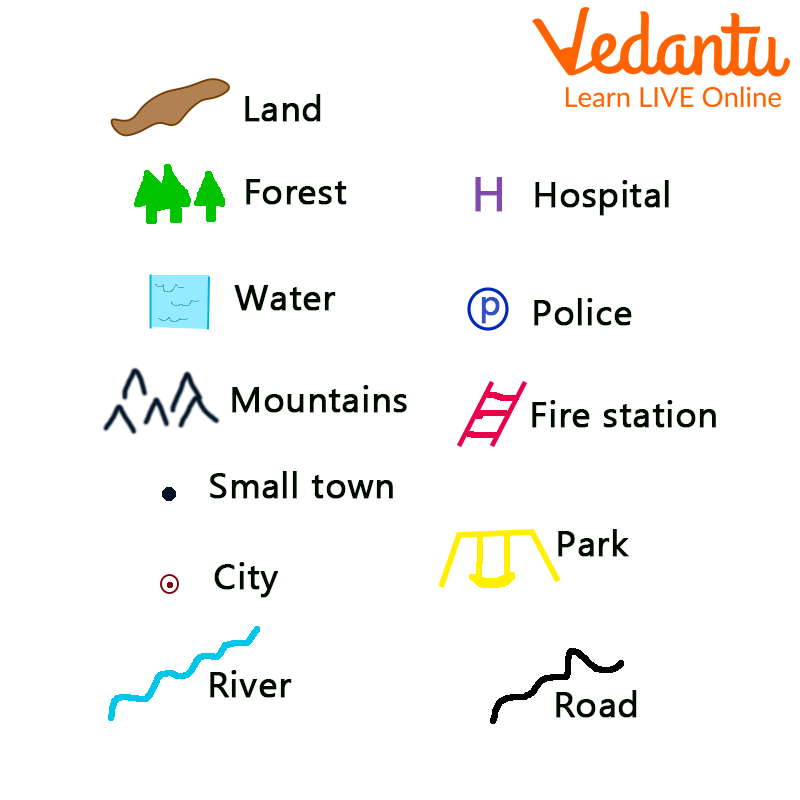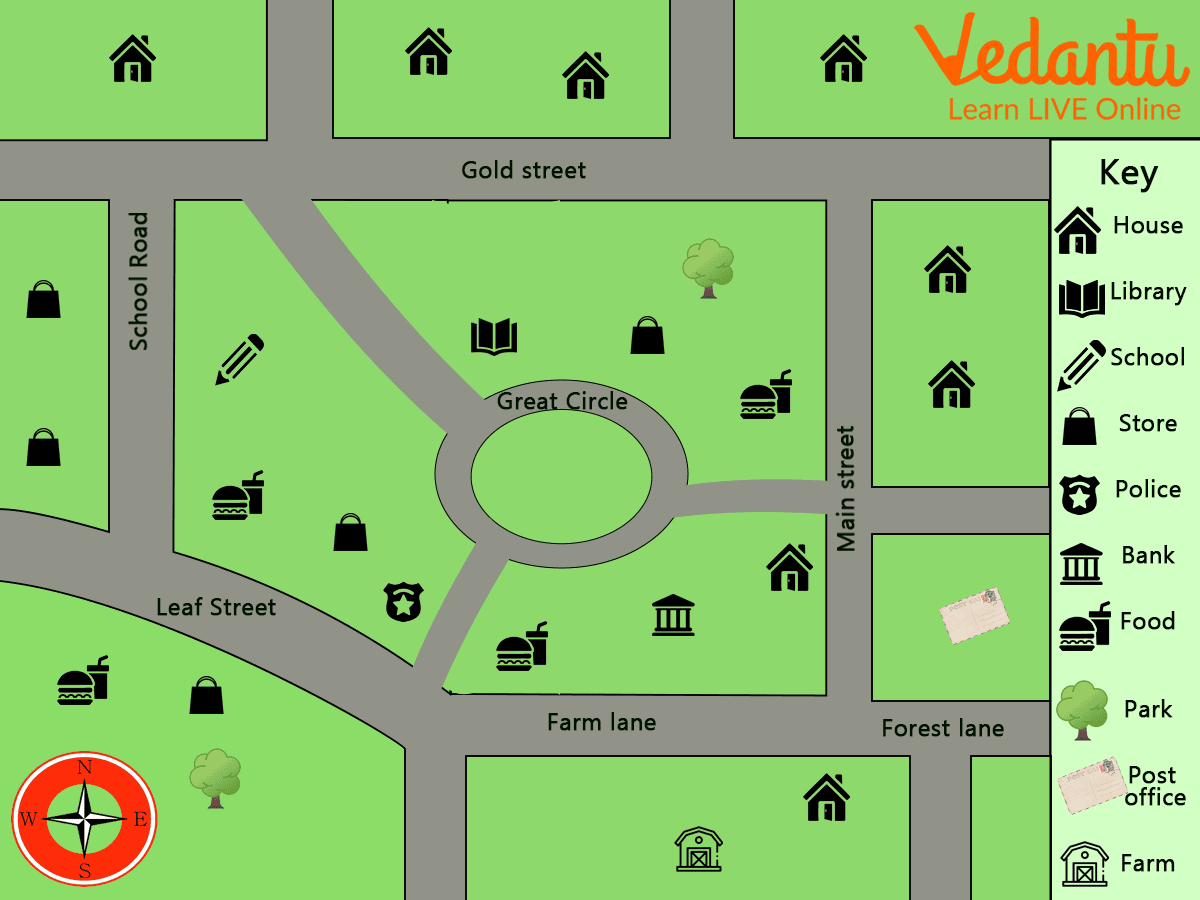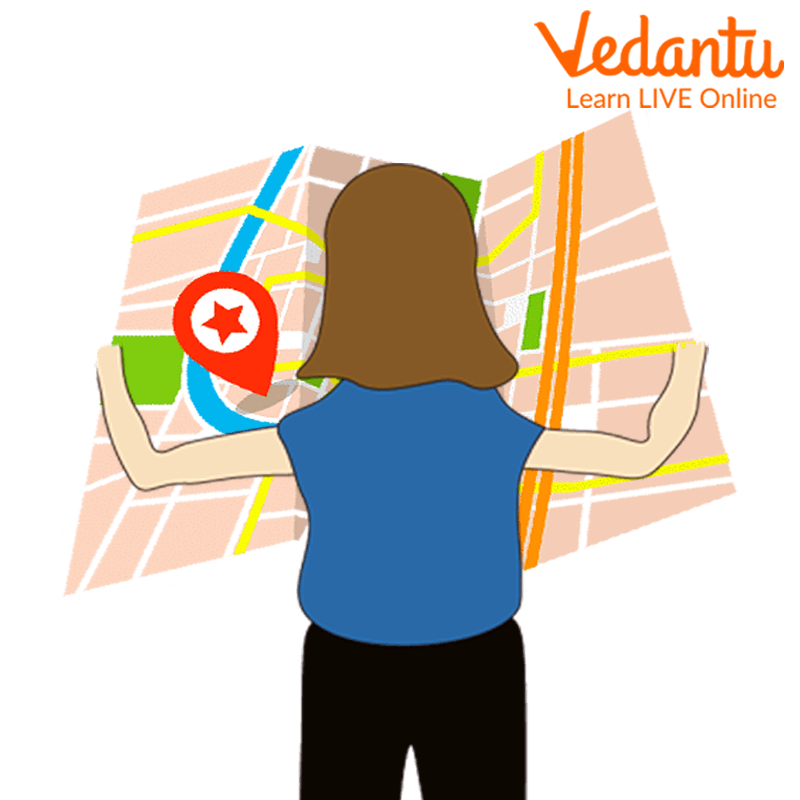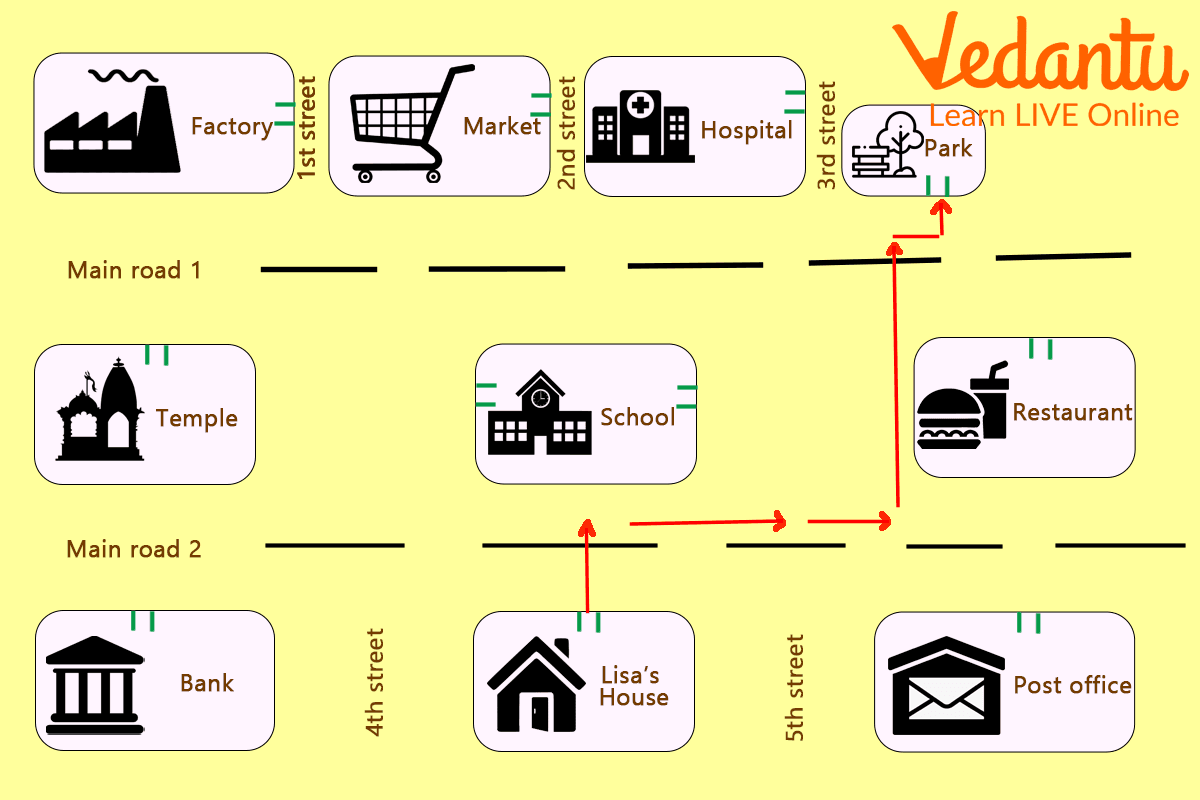




Essential Map Symbols: Meaning, Examples & Practical Tips
Reading maps using symbols is an essential part of the map. It provides a lot of information in a limited space. Map symbols are easy to draw and read even if you can't ask someone for directions because you don't know the local language. You may use symbols to collect information from maps.
What are Symbols?
A symbol is a shape or object used to represent something else. Symbols are often used to refer to different things in different situations. Different symbols and colors are used on maps to mark important places such as hospitals, train stations, and schools.

Symbols Used on a Map
What are Maps?
A map is a pictorial representation of all or part of an area, usually displayed on a flat surface. A map is an image that provides information about a place. For example, a map of bedrooms might show where beds, dressing tables, and wardrobes are located. A map of a city or region shows streets, highways, schools, or places of interest.
Maps are very useful and important to us. They help us navigate different places and give us directions to different places with the help of directions symbols present on the maps.

Map of a Community
Map Reading
Reading a map is the process of looking at a map to see what is being displayed and how the cartographer(a person who draws or makes maps) described the map. This includes identifying the objects or phenomena depicted, the symbols and labels used, and information about the map that may not appear on the map.

Map Reading
How do Symbols Help in Reading Maps?
Maps are easy to draw with symbols and are easy to understand without asking anyone for directions as we don't know the language of the area. Symbols are made up of individual points, lines, or shaded areas on the map. They have size, shape, and (usually) color. Map symbols collectively represent details that lead to shape, relative location, distribution, and structure.
The best way to read a map or directions is to use symbols. You can use symbols such as lines, shapes, shades, or colors to easily find specific landmarks or directions. Buildings, roads, rivers, bridges, trees, railroads, and many other elements make it impossible to draw a map in real shape and size. So we use specific symbols, shades, colors, images, etc. to display the map line. This symbol provides a lot of information and helps to read the card.
Summary
We have learnt about maps, their types, the symbols used on a map and how these symbols can help us to find directions. Map reading is an exercise which can help us in many ways. When you grow up and learn to drive, this reading will help you locate many places across the world. You can practice what you learnt till now with the help of a worksheet given at the end of this article.
Map Symbols Worksheet
Use Maps and answer the questions
1. Answer the following using the given maps.

Directions on a Map
(i) In which direction a hospital is situated?
(ii) What is situated between 1st and 2nd street?
(iii) How to reach the restaurant from main road 2?
(iv) By what symbol hospital is represented?
Answers:
(i) Hospital situated right to 2nd street.
(ii) Market lies between 1st and 2nd street.
(iii) More straight on main road 2 then reaching in front of 3rd street turn right to reach the restaurant.
(iv) Hospital is represented by a plus(+) symbol.
FAQs on How Do Symbols Help in Reading Maps?
1. What is map reading and what are its key components?
Map reading is the skill of interpreting the information presented on a map to understand a specific area. It involves understanding three main components: symbols, which represent real-world objects or landmarks; scale, which shows the relationship between map distance and actual distance; and direction, which helps in orienting the map correctly.
2. How do symbols and a key (or legend) help in understanding a map?
Symbols are small pictures or shapes used on a map to represent features like buildings, bridges, rivers, or forests. The key, or legend, is a box that explains what each symbol means. For example, a symbol of a tree might represent a park. By using a map key, you can decode these symbols to understand the features of an area without the map being cluttered with words.
3. What is a map scale and how is it used to calculate real-world distances?
A map scale is a ratio that compares a distance on the map to the actual distance on the ground. For instance, a scale of '1 cm = 5 km' means that every 1 centimetre you measure on the map represents 5 kilometres in reality. To calculate a real distance, you measure the length between two points on the map with a ruler and then multiply that number by the value given in the scale. You can learn more about different map scales and their uses to improve your calculations.
4. What are the four cardinal directions and how can they be identified on a map?
The four cardinal directions are North (N), South (S), East (E), and West (W). Most maps are drawn with North at the top. You can usually find a compass rose or a north arrow on the map to show the directions. If North is at the top, then South is at the bottom, East is to the right, and West is to the left. Understanding these helps you describe the location of one place relative to another.
5. What is the difference between reading a political map and a physical map?
The main difference lies in the information they display. A political map shows man-made boundaries like countries, states, and cities, along with features like roads and railways. A physical map shows the natural features of an area, such as mountains, rivers, lakes, and deserts, using colours and shading to indicate elevation. While both are types of maps, they serve different purposes in understanding geography.
6. How is the concept of 'scale' in map reading related to proportional relationships in Maths?
The scale of a map is a direct application of proportional relationships in mathematics. The scale maintains a constant ratio between map distances and real distances. For example, if the scale is 1:100,000, it means any measurement on the map is 100,000 times smaller than the actual measurement. This consistent ratio is the foundation of identifying proportional relationships, making map reading a practical exercise in applying this mathematical concept.
7. How is enlarging or reducing a map similar to the geometric concept of dilation?
Enlarging or reducing a map is a real-world example of dilation in geometry. When you zoom in or out of a digital map, you are changing its size by a specific scale factor, but the shape and proportions of the geographical features remain the same. This is exactly what dilation in Maths describes: resizing an object from a fixed point without changing its fundamental shape.
8. What steps should you follow to find the shortest route between two places using a city map?
To find the shortest route on a city map, follow these steps:
Locate Points: First, find your starting point and destination on the map.
Identify Paths: Look for all possible routes, such as different roads or streets connecting the two points.
Measure and Calculate: Use a ruler and the map's scale to measure the length of each potential route and calculate its actual distance.
Compare and Choose: Compare the calculated distances of all routes and select the one with the smallest value. This will be the shortest path.















